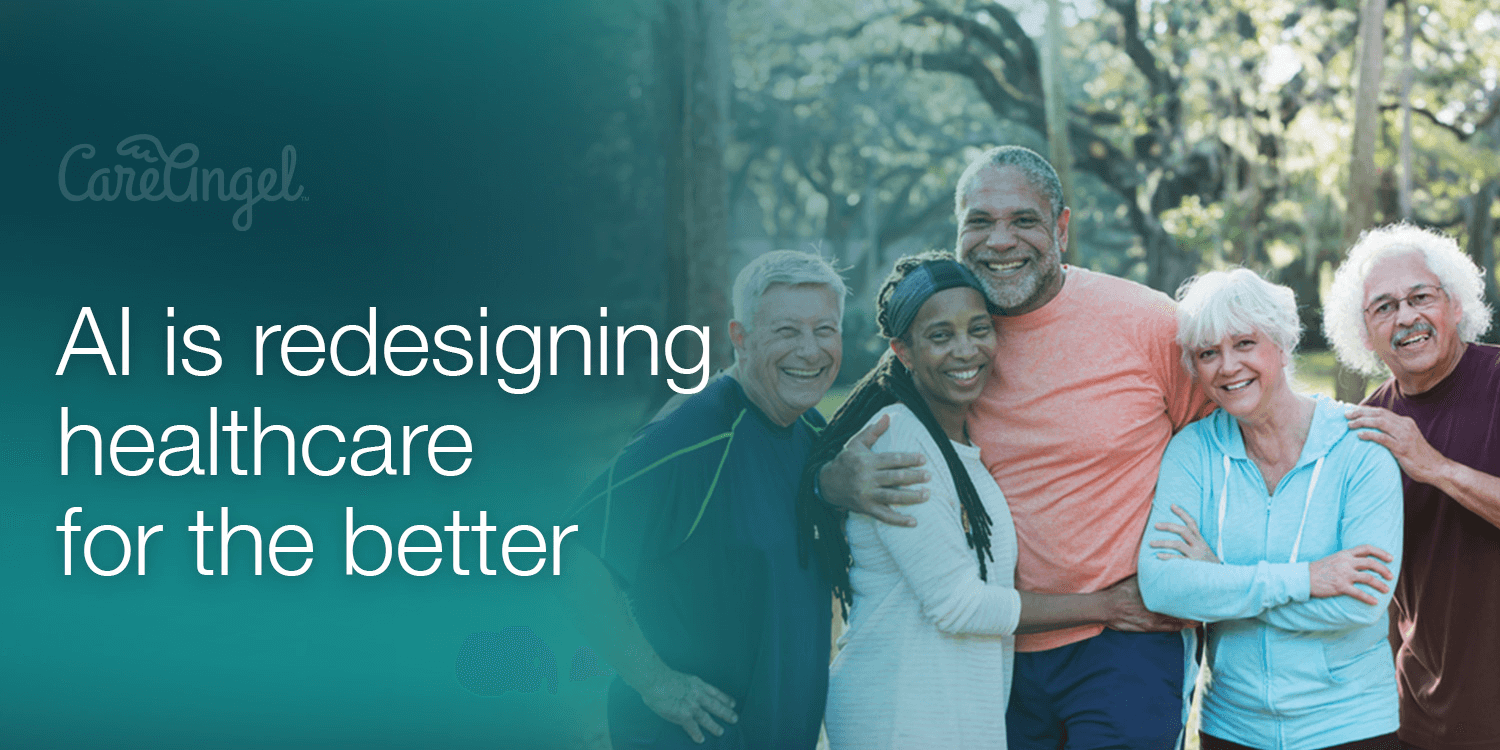
It’s spring and we are excited about the future of the most meaningful kind of digital health yet! Virtual care has paved the way towards using technology to deliver healthcare at a distance and member adoption is soaring. In fact, according to an article in the National Law Review, at least 7 million patients in the U. S. will access telemedicine services in 2018.
Share this news: LinkedIn | Twitter | Facebook
Care Angel is combining the capabilities of virtual health and artificial intelligence (AI) to expand the versatility of patient engagement to create a truly patient-centered approach to care, beyond acute episodes. Patient monitoring and health management using Angel, our intelligent, virtual nurse assistant, allows doctors, payers and their patient members to communicate bi-directionally between office visits or after hospitalization to improve care plan adherence, patient satisfaction and health outcomes.
AI is actually humanizing modern healthcare and enabling more frequent connections to effectively and efficiently close gaps in care, empowering the patient at home.
Here are 5 ways that AI is helping to redesign healthcare for
the better:
1. PATIENT CENTERED
AI and telehealth are the perfect combination for personalized health monitoring and data gathering of your patient's vitals and wellbeing to foresee potential problems before they occur. Patients are becoming more tech-savvy and want to manage their health using technology.
2. CARE PLAN AND MEDICATION ADHERENCE
Comprehensive care that proactively manages chronic conditions automatically. Keeps medication adherence and care coordination in check for tens of thousands of patients. Custom workflows, including live transfers to provider helps to drive the highest quality and efficiency at the lowest cost for all stakeholders.
3. CLINICALLY EFFICIENT
Imagine if each nurse or care manager could be 300% more efficient. AI and voice solutions allow physicians and clinicians to focus on where they create the most value; the patient encounter. Angel takes the repetitive, redundant tasks away from the caregivers, so they can practice at the top of their license.
4. REDUCE MISSED CARE OPPORTUNITIES
Meeting patients “at their need”, helps the patient to stay on course with treatment plans and increases provider awareness of potential gaps in care. When a medical need arises, the provider is notified in real time with the knowledge they need, leading to improved patient outcomes and better manage whole populations.
Here’s a short video that how AI and voice drives meaningful engagement:
5. COST EFFECTIVE DISEASE MANAGEMENT AT SCALE
How many times have you uttered these 5 words? “If only we’d known sooner.” Knowing in advance when a patient didn’t sleep well, was in pain, had out of range vitals, was in need of medical supplies or medical services can help protect the patient from an adverse episode or hospitalization.
How do we make healthcare better and more human?
Think of it this way: The more specifically you can identify the patients that are in need and what those needs are, the more likely it is that you’ll be able to close those critical gaps in care.
Consider what would happen if you could stop spending hours and hours trying to identify patients in need of intervention? Imagine if a nurse assistant could notify you when a patient was in need of attention. In just 1-2 minutes, care managers can review the specific alert, which includes longitudinal data, and appropriately take decisive action to resolve the issue.
The game truly changes when an entire community is rallied toward solving the challenge of making healthcare more human.